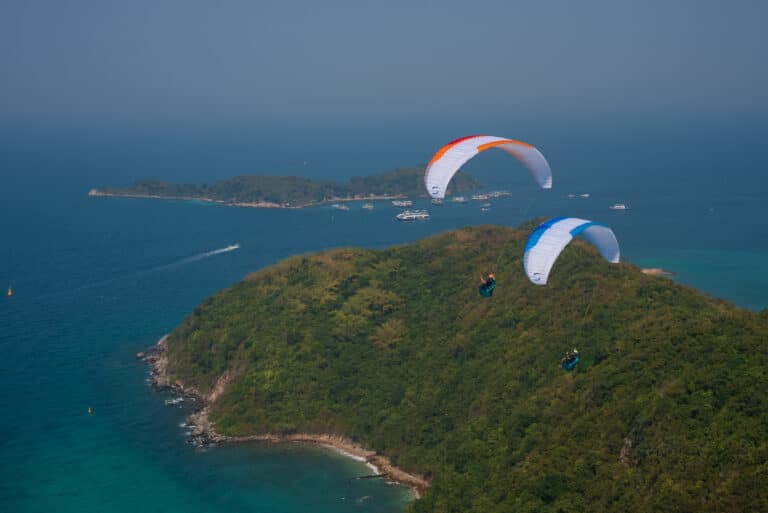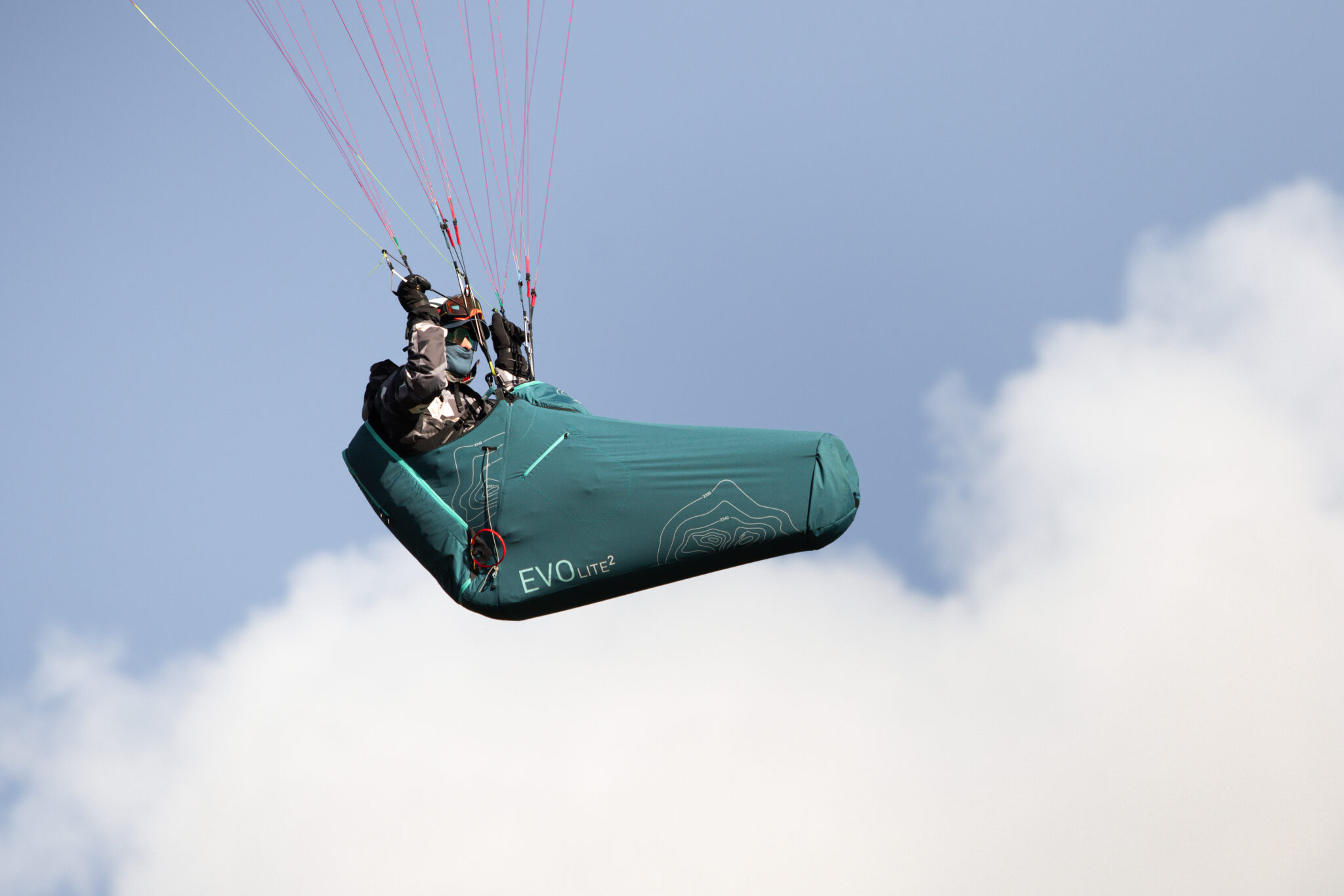
Guide: choosing your harness cocoon
When it comes to cross-country flying, the acquisition of a cocoon harness is often a prerequisite for being well equipped. Many pilots believe that the cocoon offers an essential performance gain for distance flight , but this is not necessarily the main argument that should motivate you to take the plunge.
So what are the real advantages of a cocoon? Why, and above all, when to change?
At Supair, harnesses design is at the heart of our business. We put all our expertise at the service of pilots , to guide you towards the equipment best suited to your needs and riding style. Let's take a look at what you need to know to choose your cocoon.
What is a cocoon?
Acomfortable, aerodynamicharness , the cocoon is designed for cross-country flight . It is aimed at experienced pilots who wish to move into cross-country flying.
While this may seem a simple definition, there are many different types of cocoon for all types of pilots. So choosing the right harness can be a complex task if you don't have access to all the information you need. But don't worry! This article is here to guide you.
The different types of cocoon
Standard cocoons
Standard cocoons are aimed primarily at cross-countrypilots and paragliders looking for their first cocoon harness .
The emphasis is on comfort and accessorization. As weight and bulk are not the priority, the designers foam and reinforce the entire chassis and structure to offer maximum comfort, storage and practicality at flight. The pilot therefore has access to every convenience: instrument holder, cockpit, radio pocket, ballast pocket, etc.
These "all-comfort" cocoons are sometimes equipped with a rearfairing , also known as a "foil" or "fairing", as on the DELIGHT 4 Sport. This design improves harness performance by reducing pilot-induced drag. The rear fairing also helps stabilize the harness on the yaw axis, increasing steering comfort and maintaining optimum flight position.
harness equipped with a foil are suitable for pilots who already have flight experience with a cocoon. If you're buying your first cocoon, we advise you to choose a harness without a rear fairing , to make it easier to get used to. This is particularly true of the DELIGHT 4 which has been designed for comfort and simplicity.
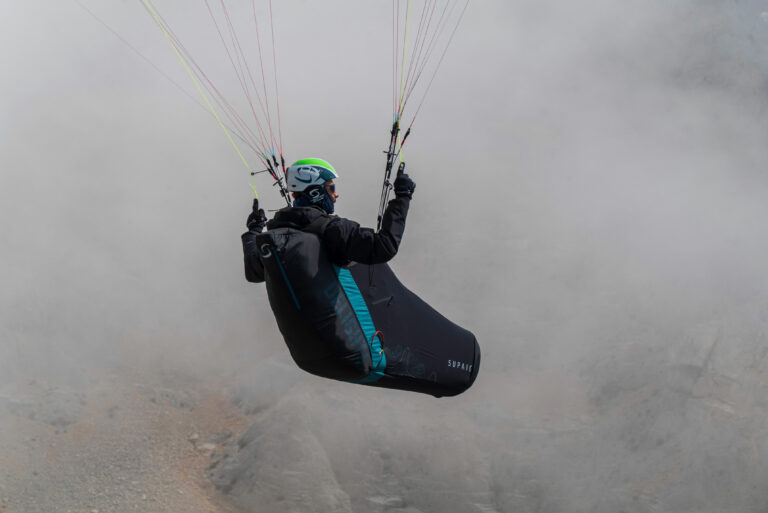
Light cocoons
Although cocoons are primarily designed for cross-country riding, they are also compatible with other practices such as Hike& Fly or flight bivouac. With this in mind, lightweight cocoons have arrived on the market. These harnesses focus on lightness and compactness, making them easy to carry in a small bag, while offering all the advantages of a flight cocoon.
When lightness is a priority, other characteristics are impacted at design. For example, light cocoons will be less reinforced to reduce their weight, requiring careful handling to ensure a longevity similar to that of standard cocoons.
For the flight walking competition, every element is designed to createthe lightest, most compact harness possible. On the other hand, cocoons designed for flight bivouac seek above all to offer a large volume of Storage with numerous spacious Pockets .
Lightweight cocoons are still compatible with comfort. However, sinceSeat is often less rigid than a standard cocoon, some models are more suitable for certain body types. So it's essential to try out different models before you buy, to find the one that best suits your morphology and needs.
Note that light cocoons often offer fewer adjustment possibilities. This makes it all the more important to try out a light harness sub-portical system before buying. Similarly, Adjustment systems are designed to be as light as possible, so they may be more difficult to access to modify once on flight.
So that you can set your own Zipper between lightness, compactness and comfort, the STRIKE2 has the advantage of being modular. Although very light, it offers different levels of accessorization:
- If you want to fly comfortably for a long time, install all the accessories on the STRIKE2 accessories: miniplate, back foam, Carabiners , etc.
- On the other hand, if you're looking for maximum lightness, remove all "comfort" accessories, install the ConnectsInflatable protectionand off you go!
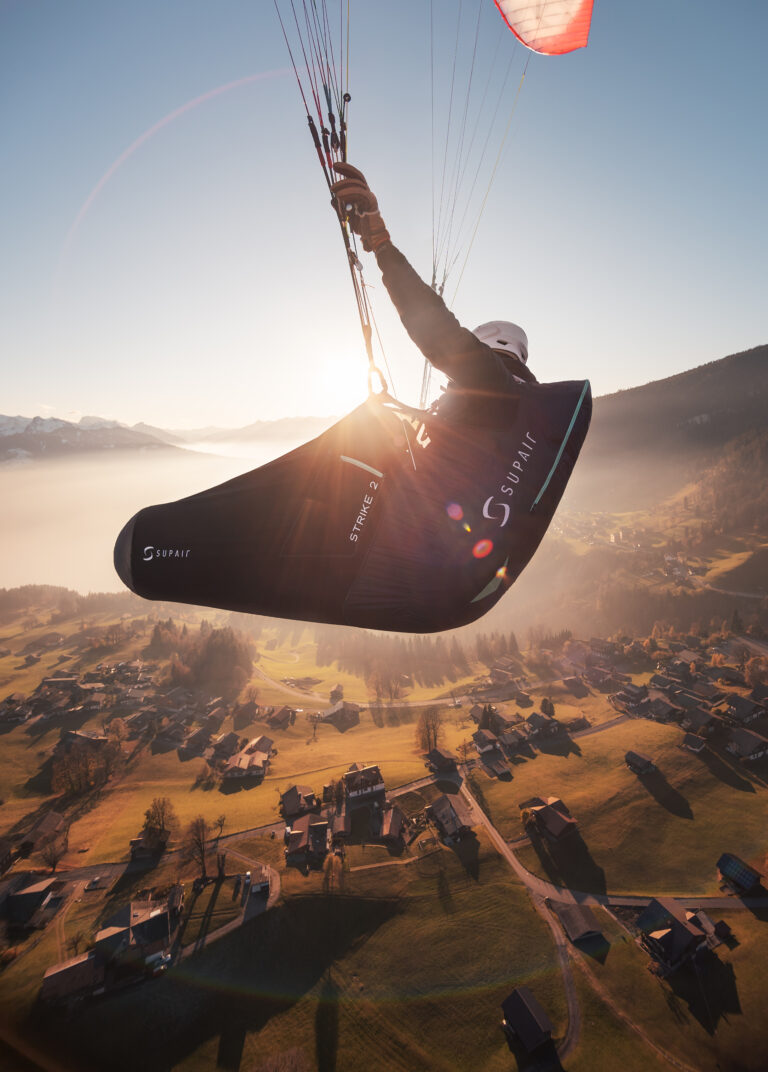
Modular cocoons
Much rarer on the market, theEVO LITE 2 is the benchmark in modular harnesses . It's aSeat harness ideal for progression and on-siteflight , which can be transformed in seconds into a cocoon harness thanks to the addition of a speedbag, perfect for cross-country riding.
This type of harness is an ideal choice for pilots progressing towards cross-country riding. It gives you a single,versatile harness that adapts to your needs and will stay with you for a long time.
Whether you're a beginner or an experienced pilot looking to explore new possibilities, theEVO LITE 2 adapts to your flying style thanks to its modular design and innovativedesign .
Switching from harness Seat to the cocoon takes just a few seconds, using a simple Zipper, which makes this handling quick and easy. To switch from the Seat to the outstretched-legs position, just one Strap is needed to change the angle of the plate d' Seat: the angle should be more open when the speedbag is installed than when you are in the Seat position.
In cocoon mode, theEVO LITE 2 offers all the advantages of a standard cocoon: instrument holder, integrated cockpit, radio Pockets , and significant improvements in comfort and performance. TheEVO LITE 2 is synonymous with versatility and efficiency, offering progressing pilots a unique and durable solution for all aspects of their paraglider.
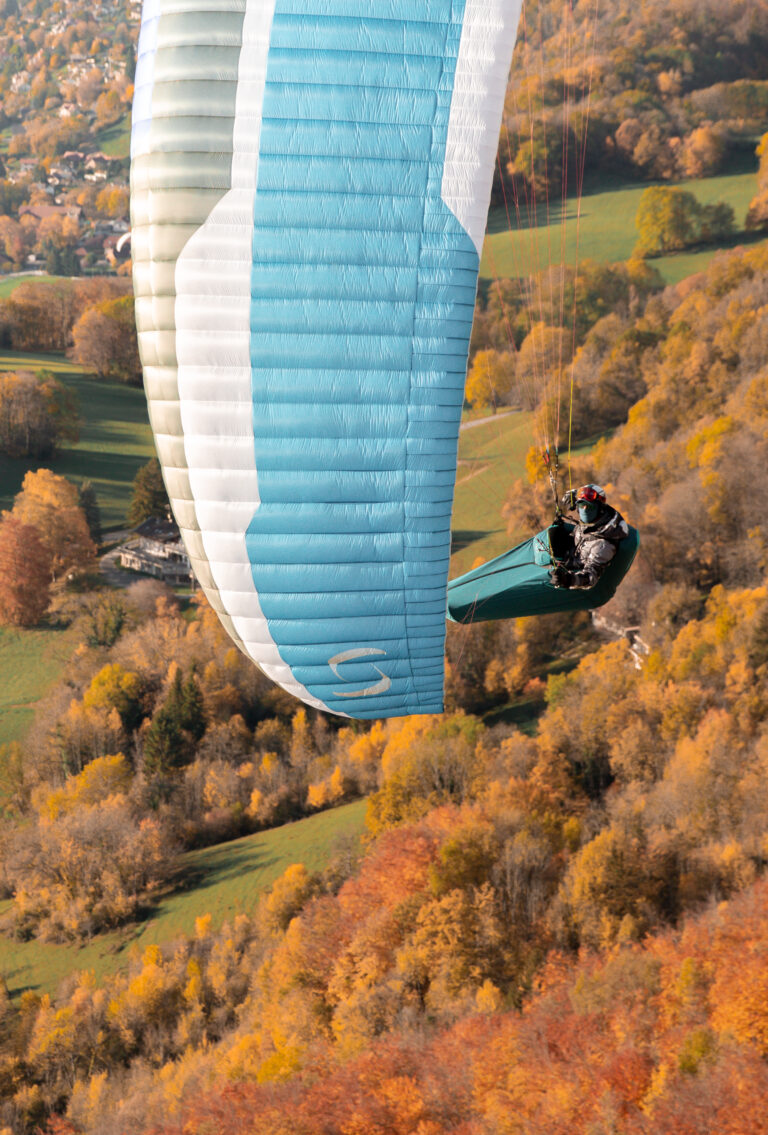
XC competition harnesses
Competition harnesses are specially designed to meet the requirements of experienced pilots taking part in High competitions. Characterized by advanced aerodynamics and an extended flight position, these harnesses minimize drag and optimize flight performance. The High level of accessorization makes these harnesses heavy and voluminous , with multiple storage options. Storageincluding Pockets for flight instruments and hydration systems.
They are often equipped with two compartments for reserve parachutes, offering additional safety in case of emergency. What's more, to enhance Stability and safety in the event of an engaged spiral, competition harnesses can incorporate a pocket for installing an anti-G parachute.
Although complex and technical to use, the combination of comfort and aerodynamics makes competition harnesses an essential choice for those seeking to maximize their performance and excel in High competitions.
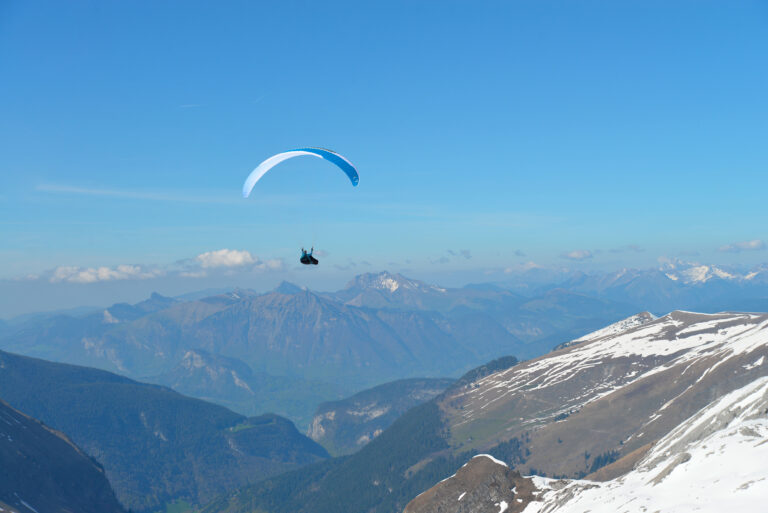
Ultra-light, high-performance cocoon
TheALP has single-handedly created a new product category: ultra-light "submarine" harnesses . Intended for highly experiencedpilots who excel at walk and flight, this harness stands out for its innovative design and extreme lightness. Because of its specificity, we won't be detailing theALP in this guide to choosing a first cocoon harness .
However, for the curious and passionate paraglider, theALP is well worth a look. Its innovative design and features make it the product of choice for those seeking maximum performance in an unrivalled compact package. If you'd like to find out more about this particular harness , don't hesitate to learn more about its specific features:

Criteria for choosing your cocoon
Now that we've reviewed the different types of cocoon available on the market, let's look at the criteria you need to take into account to make the right choice.
Your type of practice
Your paraglider practice is the first criterion to consider when choosing the harness that will suit you best.
If you fly mainly on site and are starting to make small crossings, a standard or modular cocoon will be the ideal choice.
On the other hand, if you prefer walking and flight, flight bivouac, or if you need a light, compact bag, a light cocoon will better meet your expectations. For progressing pilots looking for a multi-purposeharness that can be adapted to different flying styles, the modular cocoon is a wise option.
The first step is to identify your needs and desires. Take the time to define exactly what you want from your harness , before looking at the different models available from your dealer.
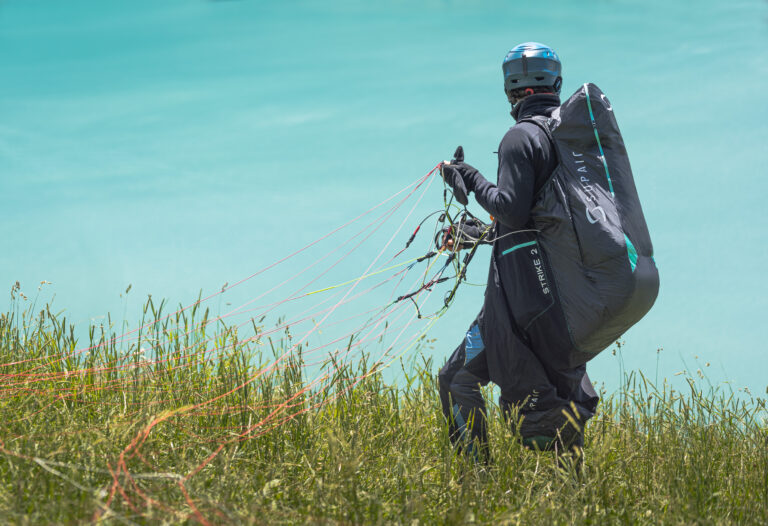
The comfort
Whether you choose a light harness or not, you need to make sure that the harness adapts well to your morpholpogy, otherwise it will quickly become uncomfortable. This is particularly important for lightharnesses with less rigid structures. Bear in mind that, even though designs are intended to suit as many people as possible, some models may be more suited to your own morphology than others.
Before making your purchase, take the time to try out your harness under a gantry crane, or even better, at flight. This will give you a real-life feel for comfort.
Don't hesitate to ask your dealer for personalized advice and to make the necessary adjustments. Incorrect settings can turn an excellent harness into an uncomfortable piece of equipment, preventing you from correctly assessing which models are right for you.
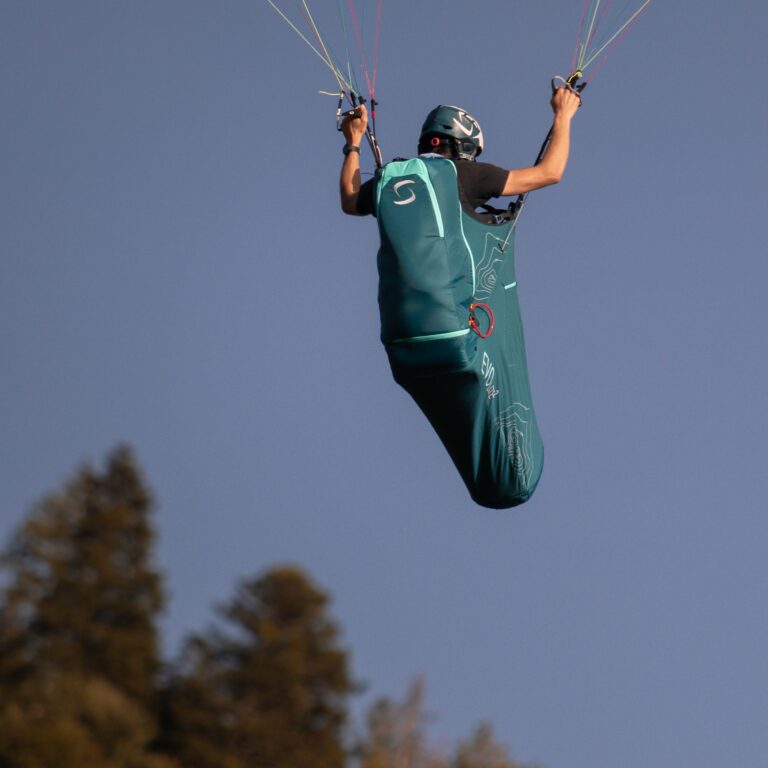
Positioning within the Flying weight range range of your glider
When choosing a glider, it is essential to respect the Flying weight range (flying weight range) range recommended by the manufacturer. If you replace a heavy harness with a lighter model (or vice versa), make sure that your Flying weight range still falls within the range recommended for your glider.
For example, if you're used to flying in the middle of the Flying weight range range and you switch to a light cocoon, you may find yourself at the bottom of the range. This change of position in the Flying weight range range will influence the behavior of your glider.
In short, whether you are lightening your equipment or opting for a heavier harness , it is essential to always follow the manufacturer's recommendations regarding the Flying weight range of your paraglider.
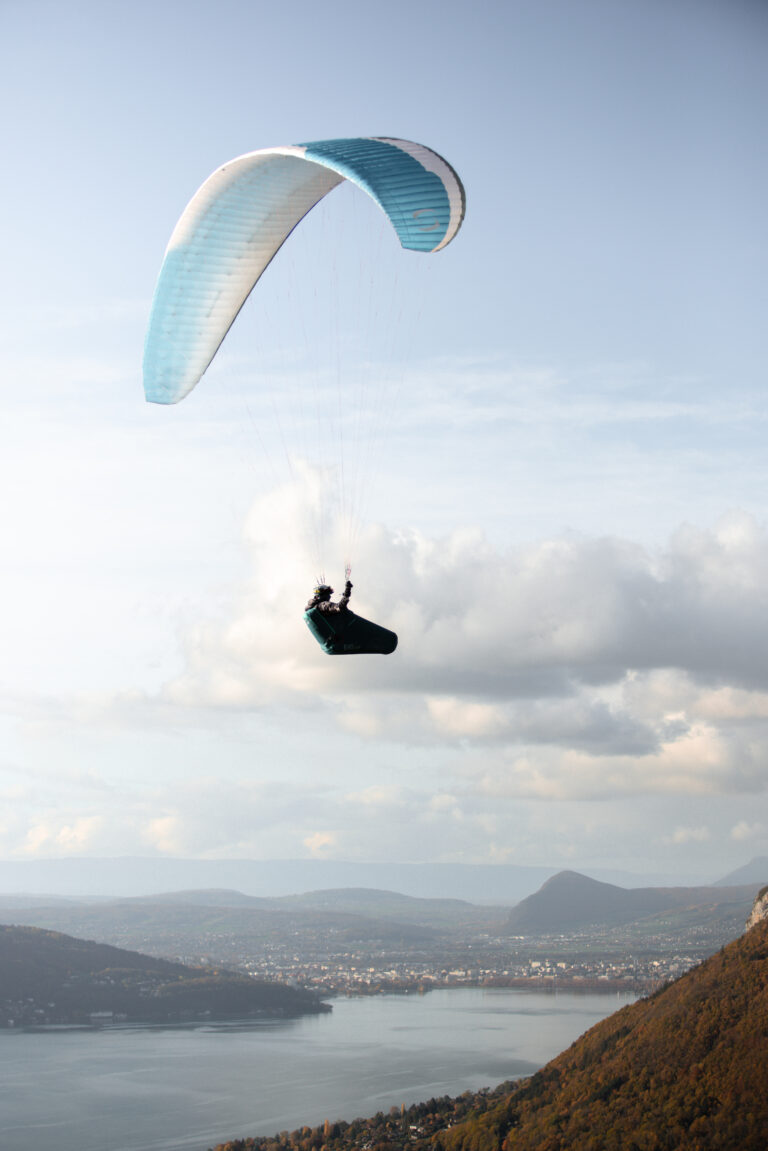
Accessorizing
The more harness is accessorized, the heavier it will be. As a result, light cocoons often offer less functionality than cross-country or competition cocoons, for example.
Defining your practice and your needs at flight will enable you to place the Zipper accessorization correctly: Do you need a wide cockpit for your instruments? Do you need a speedbag that can accommodate a penilex system? How many Pockets do you need to store all your personal belongings?
If weight is not a constraint, harness can be further accessorized, as with the integration of a safety kit in case oftree landing on the DELIGHT 4 and DELIGHT 4 Sport for example. At the end of the day, it's all a question of compromise between comfort, functionality and weight, to find the harness that best suits your expectations and your style of flight.
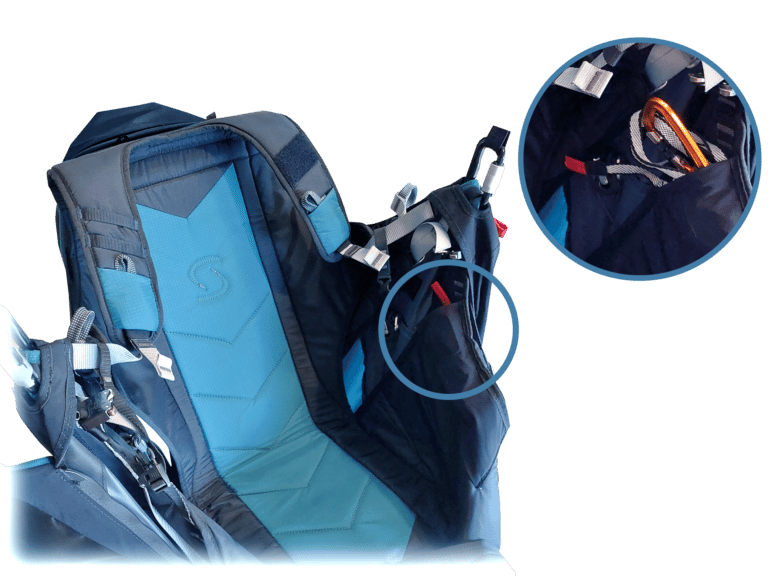
The type of protection
Protection is a key element of the harnessstructure.
Unlike an airbag, an Inflatable protection or foam protection helps to stiffen the frame and provide a more uniformSeat . However, the design cocoon harnesses does not allow for easy integration of air inlets, which complicates the installation of an airbag protection.
Finally, to benefit from a sufficiently thick "air cushion", theUse airbag protection increases the height of the harness . Its Airfoil will therefore be less aerodynamic. This is one of the reasons why most cocoons are fitted with foam or inflatable protectors.
The type of protection you choose for your harness also influences the compactness of your bag. Airbags and inflatable protectors are much more compressible than their foam counterparts, making them an ideal choice for light cocoons. On the other hand, if comfort is more important to you than weight or compactness, it's best to opt for cocoons that offer foam protection. This type of protection is generally wider and covers a larger area, offering extra support...
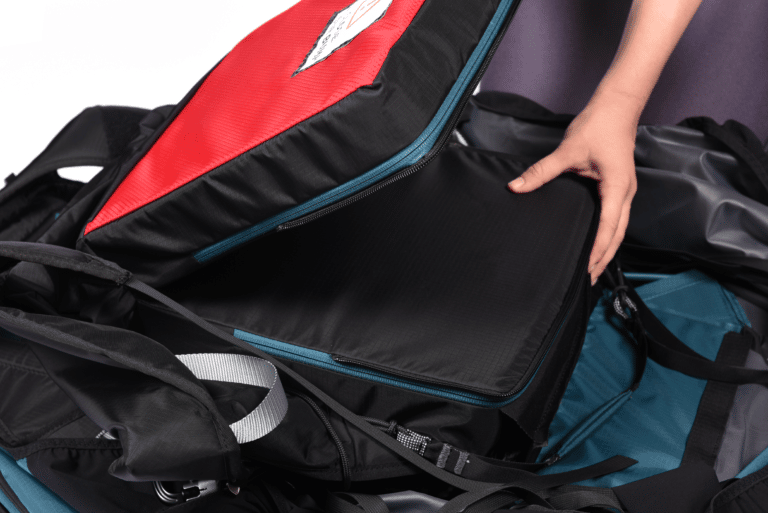
Stability, cushioning and steering
The structure of the frame, the arrangement of the straps and the height of the attachment points all play a crucial role in the harness's flight behavior. harness design is a science of compromise between three distinct notions: the Stabilitycushioning and steering. Each of these characteristics influences overall performance and the flight experience.
- Stability: refers to the harness 's ability to minimize unwanted movements during flight. Stability is achieved by a rigid structure or by theABS system , both of which have a major influence on harnesses behavior. ABS system technology was invented by Supair founder Pierre Bouilloux.
- Cushioning: this refers to harness 's ability to absorb small, non-significant movements at flight. Damping is achieved thanks to the deformability of the materials (mainly the straps) of the harness.
- steering refers to the ease and responsiveness with which the pilot can steer using harness supports. A harness that is highly reactive to steering is often more unstable, enabling more efficient weight transfer and therefore more effective harness support.
Your goal is to find a harness that not only matches your Stability and cushioning preferences, but also works in harmony with your glider. The synergy between your paraglider and your harness is essential to ensure your comfort at flight.
For example, a glider with a very stable progression will be more pleasant to fly when combined with a harness that offers good communication, enabling the pilot to receive precise information on the air mass. Conversely, a more technical glider combined with a stable harness avoids overwhelming the pilot with superfluous information.
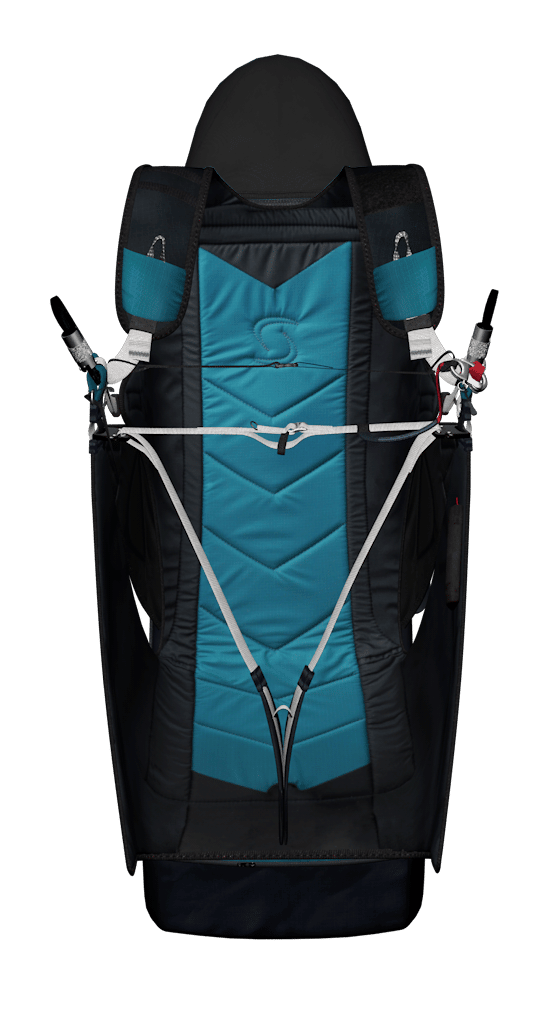
Care and durability
The final point to consider when choosing your harness is its maintenance and durability. Depending on your flying style and the environment in which you fly most often, certain equipment will be better suited to guaranteeing the longevity of your cocoon.
If you fly over abrasive terrain, such as rocky ground, pebbles or sand, we advise againstUse an ultralight harness . Although these models are tough, their thinner Fabrics and less-reinforced structures are more sensitive to dust and abrasion.
As a general rule, to prolong the Life span life of your harness, avoid letting it rub on the ground, store it away from sunlight and humidity, and in case of doubt, have it checked by a qualified workshop.

And finally... When to change?
The ideal time to switch to a harness cocoon depends on a number of factors. If you're starting to consider longer, more demanding flights, or if you're looking to maximize your comfort in the air, this is probably a good time to consider making the switch.
A cocoon can offer a better Stability, a more comfortable flight position and reduced drag. All of which become important as soon as you move beyond site flying. If you feel your progression is pushing you towards greater performance and comfort, then acquiring a harness cocoon could well be the next logical step in your evolution as a pilot.
In short, choosing the right harness is essential to optimizing your flight experience. Whether you're a pilot beginner, an avid walker and flight, or a seasoned competitor, there's a harness adapted to your specific needs. Take the time toestablish your riding style, your comfort preferences, and the maintenance required to ensure the durability of your equipment.
Don't forget that the combo formed by your harness and your glider plays a key role in your comfort at flight. By learning more and trying out different models, you'll be able to find the harness that will accompany you on all your adventures in the air.
And don't hesitate to ask your dealer for advice on the best choice for you.

